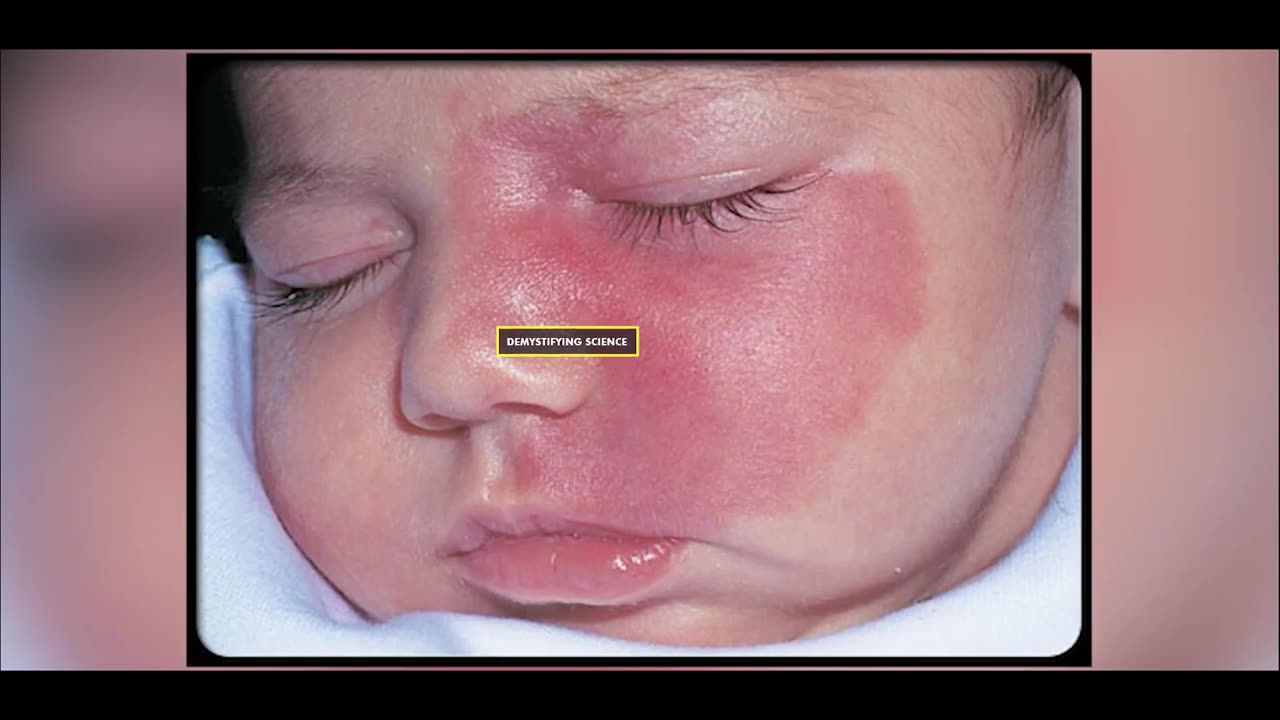Premium Only Content

Birthmarks: Understanding the Types, Causes, and Treatment Options
#skinpigmentation #birthmark #melanin
Birthmarks are unique marks that appear on our skin at birth or a few weeks after birth. They can vary in color, size, and shape and are often found on the face, neck, head, etc. Some birthmarks, like moles, fade over time, while others slowly progress and remain on our skin for life.
Causes of Birthmarks
The exact cause of birthmarks remains unknown, but understanding the types of birthmarks, including pigmented and vascular birthmarks, can help identify how they are formed.
Pigmented Birthmarks
Pigmented birthmarks result from an increase or decrease in the pigments that color our skin. Melanocyte cells in our skin produce a pigment called melanin, which gives color to the skin. If melanin production is disturbed for some reason, the affected area's skin color differs from the rest, called a pigmented birthmark.
Notable causes of pigmented birthmarks include:
- Accumulation of melanocytes in the skin.
- Abnormal production of melanin pigment due to genetic mutation.
- Trapping of melanocytes in the dermis layer.
If an unknown reason causes more melanocytes in a skin area, it leads to increased melanin production, changing the skin color.
If mutations occur in melanocytes' DNA, the melanin production in the affected area might increase or decrease, causing the skin color to become light or dark brown, leading to a birthmark appearance.
Similarly, mutations in melanocytes during fetal development can prevent them from reaching the epidermis layer and trap them in the dermis layer, changing the affected areas' skin color and forming a birthmark.
Vascular Birthmarks
Vascular birthmarks are formed due to abnormalities in our blood vessels, such as Hemangiomas, salmon patches, and port wine stains.
Hemangiomas:
These birthmarks result from the abnormal development of arteries in our skin surface. Hemangiomas turn the skin red. Some scientists believe that proteins produced during placental growth make the skin's blood vessels abnormal, leading to hemangiomas.
Salmon Patches:
In some cases, small abnormal capillaries accumulate on the skin surface, turning the affected area red or pink. These birthmarks are called salmon patches.
Port Wine Stains:
Specific chemical signals in our blood control blood flow. Mutations in the genes of these chemicals can make the skin's blood flow abnormal, turning the skin red, leading to a birthmark known as a port wine stain.
Treatment
Pigmented Birthmarks:
Usually, pigmented birthmarks fade over time, but in some cases, surgery may be required to remove them, such as giant moles.
Vascular Birthmarks:
Various methods treat vascular birthmarks, including cosmetic solutions like makeup, medicines, laser treatments, and surgery.
Conclusion
Birthmarks, though harmless, are a fascinating aspect of human biology. While the exact causes remain unknown, advancements in medicine provide insights and various treatment options for those who seek to understand or manage these distinctive skin features.
#birthmarks #birthmark #skinpigmentation #melanin
-
 LIVE
LIVE
Donald Trump Jr.
5 hours agoBreaking News on Latest Cabinet Picks, Plus Behind the Scenes at SpaceX & Darren Beattie Joins | TRIGGERED Ep.193
12,252 watching -
 41:37
41:37
Kimberly Guilfoyle
3 hours agoPresident Trump Making all the Right Moves,Live with Border Union Chief Paul Perez & Lawyer Steve Baric | Ep. 176
69.4K11 -
 2:00:54
2:00:54
Redacted News
3 hours agoBREAKING! Putin just SHOCKED the world, launches nuclear capable warheads "NATO can't stop it"
122K201 -
 55:37
55:37
Candace Show Podcast
3 hours agoMatt Gaetz Out, Jussie Smollett Walks Free! | Candace Ep 108
78.6K156 -
 4:29:05
4:29:05
Tate Speech by Andrew Tate
11 hours agoEMERGENCY MEETING EPISODE 92 - IN THE TRENCHES
724K1K -
 1:01:23
1:01:23
In The Litter Box w/ Jewels & Catturd
23 hours agoThe Trump Effect | In the Litter Box w/ Jewels & Catturd – Ep. 696 – 11/21/2024
64.6K24 -
 20:53
20:53
SLS - Street League Skateboarding
2 days agoGold Medals, World Class Food, Night life & more - Get Lost: Tokyo
64.7K7 -
 47:13
47:13
PMG
19 hours ago $0.78 earned"Hannah Faulkner and Doug Billings | WHY LIBERALS LOST THE ELECTION"
34K -
 59:01
59:01
The Liberty Lobbyist
5 hours ago"We Only Have NOW To Make a Difference"
34.2K2 -
 4:16:41
4:16:41
CatboyKami
7 hours agoStalker 2 Blind playthrough pt1
33.9K2